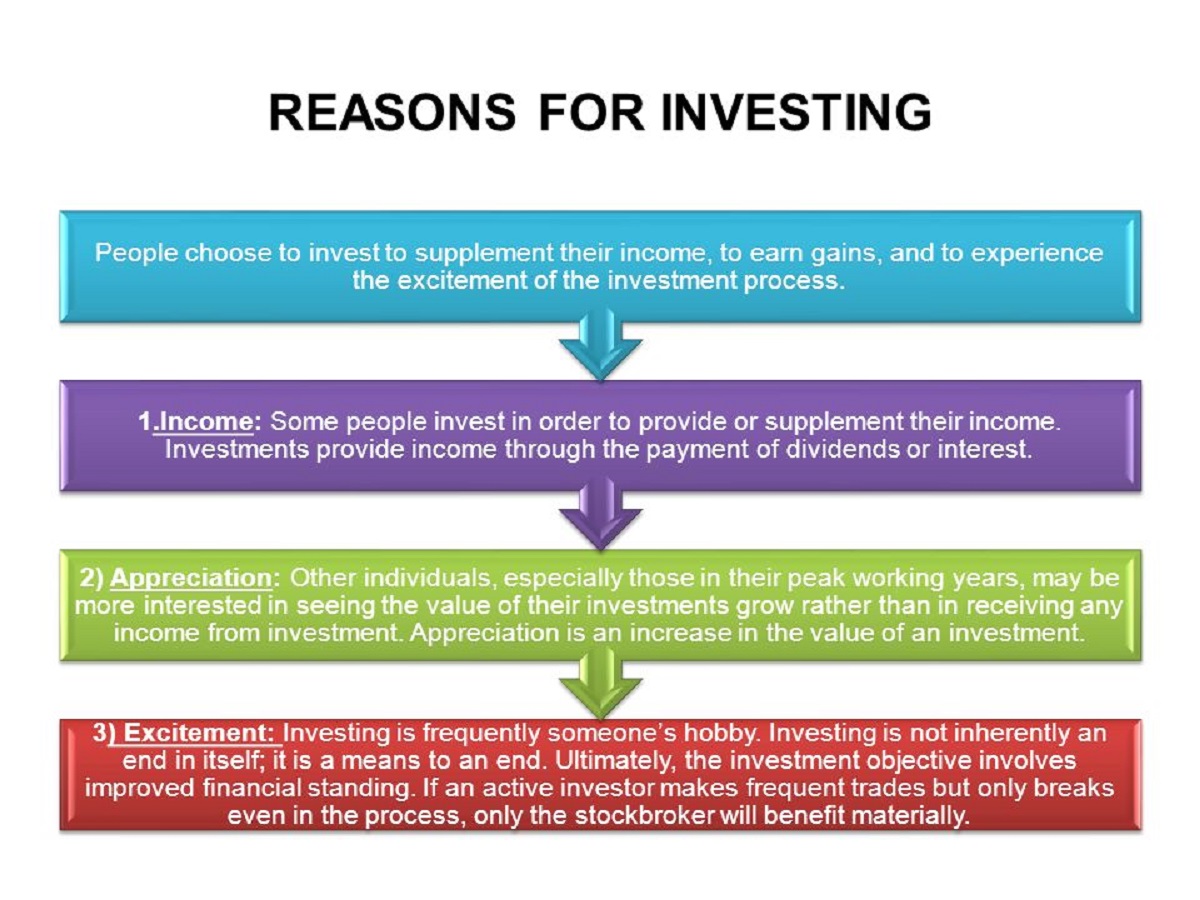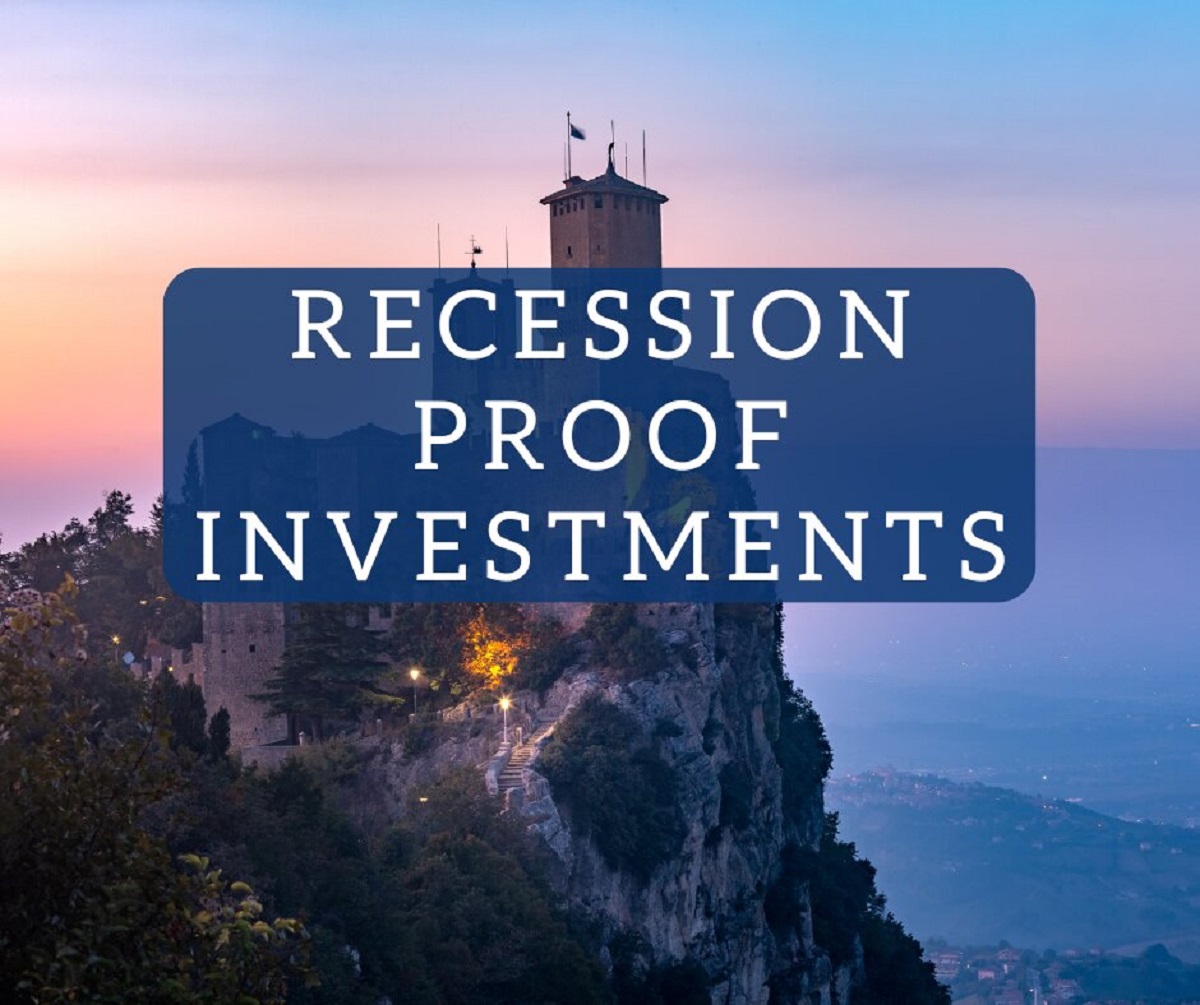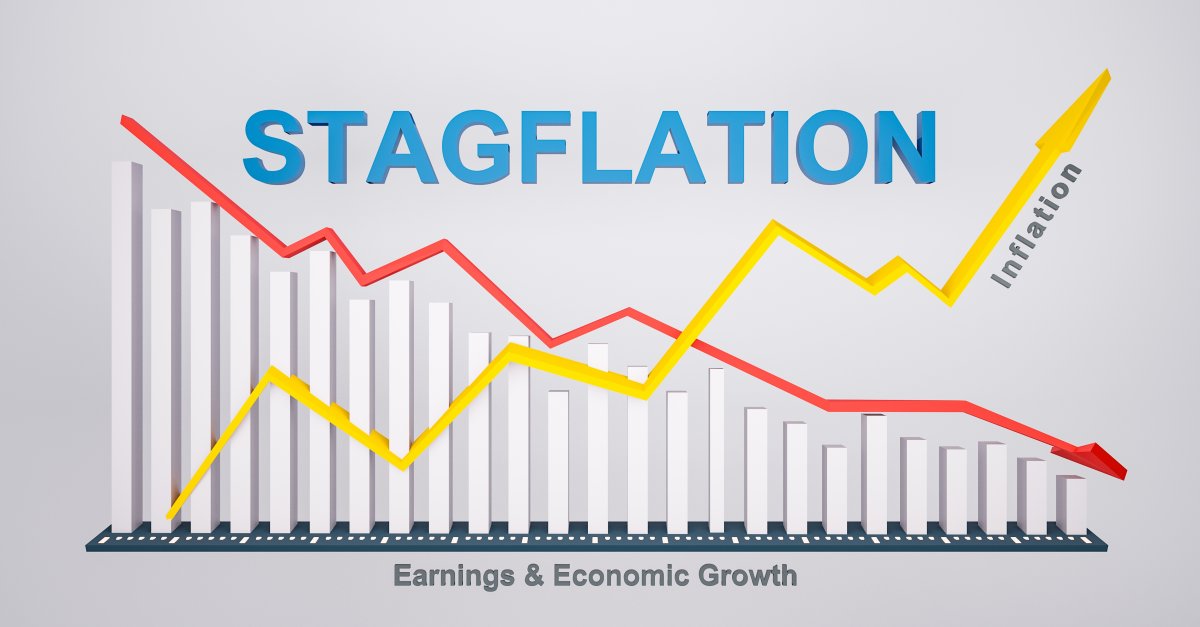Introduction
When it comes to investing, individuals have a wide range of options to choose from. Among the various investment strategies, two popular approaches are growth investments and income investments. While both offer opportunities for financial gain, there is often a primary reason why people choose growth investments over income investments.
Growth investments, as the name suggests, focus on the potential for capital appreciation over time. These investments typically involve purchasing assets, such as stocks or mutual funds, with the expectation that their value will increase in the future. On the other hand, income investments focus on generating a regular stream of income through assets such as bonds or dividend-paying stocks.
While income investments provide a steady flow of income, the main reason people tend to prefer growth investments is the prospect of higher returns. This means that individuals are willing to accept a higher level of risk in exchange for the potential for greater financial rewards.
Throughout this article, we will explore in detail the reasons why individuals choose growth investments over income investments. It is important to note that investment decisions should always be based on individual financial goals, risk tolerance, and time horizon.
Definition of Growth Investments
Growth investments are a category of investments that prioritize capital appreciation over generating income. These types of investments typically involve purchasing assets with the expectation that their value will increase significantly over time. The primary objective of growth investments is to grow the initial investment through price appreciation rather than relying on regular income streams.
One common example of a growth investment is investing in stocks of companies that have the potential for rapid expansion and growth. These stocks are often associated with companies in emerging industries or those with innovative products or services. By investing in such stocks, individuals aim to benefit from the company’s success and the subsequent increase in stock value.
Another popular growth investment option is investing in mutual funds or exchange-traded funds (ETFs) that focus on companies with substantial growth potential. These funds are managed by professional portfolio managers who identify and invest in companies with high growth prospects. Investing in these funds allows individuals to diversify their investments across multiple companies and industries, reducing the risk associated with investing in a single stock.
Real estate investment trusts (REITs) are another avenue for growth investments. REITs allow individuals to invest in commercial real estate properties without the need for direct ownership. As the value of these properties appreciates, the value of the REITs also increases, leading to potential capital gains for the investors.
Growth investments often involve higher volatility and risk compared to income investments. As these investments rely on future price appreciation, there is a possibility of substantial fluctuations in the value of the investment. However, with higher risk also comes the potential for higher returns, making growth investments appealing to those seeking long-term wealth accumulation.
In the following sections, we will explore the main reasons why individuals choose growth investments over income investments, delving into the potential for higher returns, long-term wealth accumulation, diversification and risk management, and investing in future opportunities.
Definition of Income Investments
Income investments are a category of investments that prioritize generating regular income streams for investors. These types of investments are designed to provide a steady flow of income through dividends, interest payments, or rental income. Unlike growth investments, income investments do not typically focus on capital appreciation as the primary objective.
One common example of an income investment is bonds. When individuals invest in bonds, they are essentially lending money to a government or corporation in exchange for regular interest payments over a specific period of time. Bonds are considered relatively low-risk investments, as they offer a fixed income stream and a predetermined return of principal upon maturity.
Dividend-paying stocks are another popular means of generating income from investments. Many publicly traded companies distribute a portion of their profits to shareholders in the form of dividends. By investing in these stocks, individuals can receive regular dividend payments, providing a source of income on top of any potential capital appreciation.
Real estate can also be a source of income investments. Rental properties, such as residential or commercial real estate, can generate rental income for investors. This rental income can serve as a steady stream of income, making real estate an attractive option for individuals seeking income investments.
Income investments are often favored by individuals who are looking for a reliable cash flow and a more conservative approach to investing. Unlike growth investments, income investments tend to be less volatile and offer a more predictable stream of income. This stability can be particularly appealing for retirees or individuals who rely on investment income as a primary source of funds.
While income investments may not have the same potential for high returns as growth investments, they provide a level of financial security and stability that is valued by many investors. In the next sections, we will explore the reasons why individuals often choose growth investments over income investments, considering factors such as the potential for higher returns, long-term wealth accumulation, diversification and risk management, and investing in future opportunities.
Potential for Higher Returns
One of the primary reasons why individuals choose growth investments over income investments is the potential for higher returns. Growth investments are often associated with higher risk, but they also offer the opportunity for greater financial rewards.
Unlike income investments, which primarily focus on generating regular income streams, growth investments prioritize capital appreciation. This means that individuals anticipate their investment to increase in value over time, leading to significant gains in their overall portfolio.
Stocks, especially those of companies with high growth potential, are renowned for the possibility of substantial returns. Investing in these growth-oriented stocks can result in significant capital gains if the companies are successful in expanding their business operations and increasing their market value.
Additionally, growth-oriented mutual funds and ETFs offer potential for higher returns. These funds invest in a diversified portfolio of stocks, focusing on companies with strong growth prospects. By spreading investments across multiple companies, investors increase their chances of benefiting from the growth of individual stocks.
However, it is important to note that with the potential for higher returns comes a higher level of risk. Growth investments tend to be more volatile and can experience significant price fluctuations in the short term. It is essential for investors to carefully assess their risk tolerance and diversify their portfolio to mitigate potential losses.
Despite the associated risks, the allure of higher returns is often enticing for individuals looking to maximize their investment growth. By allocating a portion of their portfolio to growth investments, investors can aim for substantial long-term gains that may outpace the returns from income investments.
In the next sections, we will explore additional reasons why individuals choose growth investments over income investments. These reasons include long-term wealth accumulation, diversification and risk management, as well as the opportunity to invest in future opportunities.
Long-Term Wealth Accumulation
Another compelling reason why individuals choose growth investments over income investments is the potential for long-term wealth accumulation. Growth investments are often viewed as vehicles for building substantial wealth over an extended period of time.
Unlike income investments that prioritize generating regular income streams, growth investments focus on the appreciation of capital. By investing in assets such as stocks, mutual funds, or real estate properties with growth potential, individuals aim to accumulate significant wealth over the long term.
The power of compounding plays a vital role in long-term wealth accumulation. As growth investments generate capital appreciation, the resulting gains are reinvested, leading to exponential growth of the original investment. Over time, the compound returns can significantly multiply the initial investment, contributing to the accumulation of substantial wealth.
Moreover, growth investments can outpace the rate of inflation, allowing individuals to maintain their purchasing power and protect their wealth. Income investments, such as bonds or traditional savings accounts, may struggle to keep up with inflation, as the income generated may not be sufficient to counter rising prices. Growth investments, on the other hand, have the potential to grow at a rate that surpasses inflation, preserving and growing the real value of the investment.
Furthermore, the long-term nature of growth investments allows investors to ride out market fluctuations and benefit from the overall growth of the economy. While short-term market volatility may cause temporary declines in the value of growth investments, investors who stay invested for the long haul often witness sustained growth and positive investment performance.
It is important to note that long-term wealth accumulation requires patience and discipline. Investors need to establish realistic financial goals, develop a well-diversified portfolio, and maintain a long-term investment strategy. By consistently investing in growth assets and harnessing the power of compounding, individuals can position themselves for the potential accumulation of significant wealth over time.
In the following sections, we will explore additional reasons why individuals opt for growth investments over income investments, including diversification and risk management, as well as the opportunity to invest in future opportunities.
Diversification and Risk Management
Diversification and risk management are key factors why individuals choose growth investments over income investments. Growth investments often offer a wider range of opportunities for diversifying one’s investment portfolio, reducing overall risk.
By investing in a variety of growth assets, such as stocks from different sectors or regions, individuals can spread their risk across multiple investments. This diversification strategy helps mitigate the impact of any single investment’s poor performance on the entire portfolio. Unlike income investments, which may consist of a relatively limited range of assets, growth investments provide greater flexibility in diversifying investments and minimizing potential losses.
Furthermore, growth investments allow individuals to participate in various market sectors that have the potential for growth. By investing in different industries, individuals can benefit from economic cycles and sector-specific opportunities. For example, investing in technology companies during a period of technological advancements or renewable energy companies during a transition to clean energy sources. Diversifying across sectors can reduce the impact of any single sector’s downturn and capture growth opportunities in different areas of the economy.
Risk management is also an essential aspect of growth investments. Although growth investments tend to have higher volatility and associated risks, individuals can actively manage and mitigate these risks. By conducting thorough research and analysis, individuals can select growth investments that align with their risk tolerance and investment goals. Additionally, regular monitoring and adjustments to the investment portfolio can help manage risks effectively.
It’s important for individuals to consider their overall financial objectives and risk appetite when diversifying their investment portfolio. A well-diversified portfolio that includes growth investments can balance risk and potential returns, providing a more stable and potentially profitable investment strategy over the long term.
In the next section, we will explore another reason why individuals choose growth investments over income investments: the opportunity to invest in future opportunities.
Investing in Future Opportunities
Investing in future opportunities is another compelling reason why individuals choose growth investments over income investments. Growth investments are often associated with industries and sectors that are expected to experience significant advancements and expansion in the future.
By investing in growth-oriented assets, individuals position themselves to capitalize on emerging trends, technological advancements, and societal changes. These investments provide an opportunity to be part of the growth story and potentially profit from the innovative ideas and industries that shape the future.
Technology is a prime example of an industry that offers immense growth potential. Investing in technology-focused stocks or funds allows individuals to participate in the rapid advancements and transformations happening across various sectors. From artificial intelligence and cloud computing to e-commerce and renewable energy, growth investments in technology can deliver substantial returns as these industries continue to evolve and thrive.
Another sector that presents future opportunities is healthcare. With advancements in medical research, personalized medicine, and the aging population, growth investments in healthcare companies can prove to be highly lucrative. Investing in biotechnology, pharmaceuticals, medical devices, or healthcare services provides exposure to an industry that is poised for continuous growth and innovation.
Additionally, investing in companies and sectors that are aligned with environmental sustainability and socially responsible practices can be a way to invest in future opportunities. As society becomes more conscious of the impact of climate change and social issues, growth investments in clean energy, sustainable agriculture, or ethical consumer goods can provide financial returns while contributing to a better future.
Investing in future opportunities also requires staying informed and keeping up with industry trends. It involves thorough research, assessment of market potential, and a long-term investment perspective. While there are risks associated with investing in emerging and evolving sectors, individuals who have the willingness to take calculated risks can position themselves to benefit from significant growth in the years to come.
To conclude, investing in future opportunities is an attractive aspect of growth investments. By allocating a portion of their portfolio to industries and sectors with high growth potential, individuals can position themselves to capitalize on emerging trends, technological advancements, and societal changes, potentially leading to substantial financial gains.
Conclusion
When it comes to choosing between growth investments and income investments, individuals often lean towards growth investments for several compelling reasons. The potential for higher returns is a significant factor that attracts investors to growth investments. The opportunity to achieve capital appreciation and experience significant long-term wealth accumulation is appealing to those seeking to build substantial financial portfolios.
Diversification and risk management are also key considerations. Growth investments offer a broader range of investment options, enabling individuals to diversify their portfolios across different assets, industries, and sectors, reducing overall risk. Additionally, the ability to actively manage and mitigate risks through research, analysis, and adjustments helps investors navigate the volatility associated with growth investments.
Another reason individuals choose growth investments is the opportunity to invest in future opportunities. By investing in sectors and industries that are expected to experience significant advancements and expansion, individuals position themselves to benefit from emerging trends, technological innovations, and societal changes. This can lead to substantial financial gains as these industries grow and evolve.
It is important to note that investment decisions should always align with individuals’ financial goals, risk tolerance, and time horizons. The choice between growth investments and income investments will depend on an individual’s specific circumstances and investment objectives.
In summary, growth investments offer the potential for higher returns, long-term wealth accumulation, diversification and risk management, and the opportunity to invest in future opportunities. While growth investments come with higher levels of risk and volatility, for those willing to embrace the associated risks, growth investments can provide a pathway to financial growth and opportunity.

























